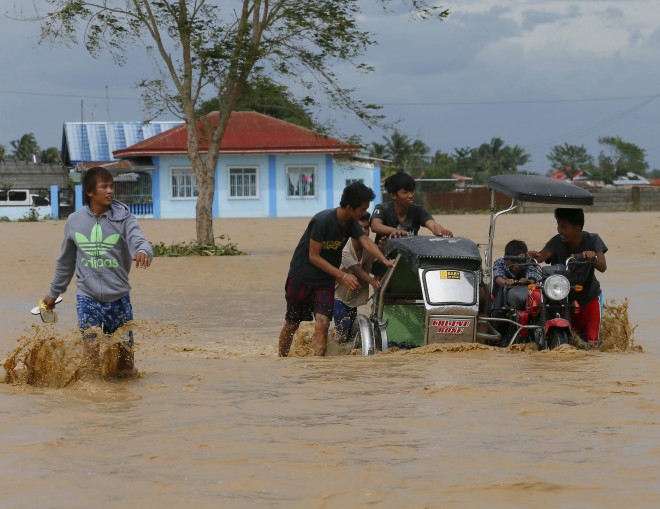
Residents wade through raging floodwaters brought about by Typhoon Koppu at Zaragosa township, Nueva Ecija province, north of Manila, Philippines Monday, Oct. 19, 2015. Slow-moving Typhoon Koppu blew ashore with fierce wind in the northeastern Philippines early Sunday, toppling trees and knocking out power and communications and forcing the evacuation of thousands of villagers. AP
Tropical cyclone Lando (international name Koppu) weakened into a severe tropical storm but it continued its slow pace on Monday afternoon.
The storm packed maximum sustained winds of 105 kilometers per hour and gusts of up to 135 kph, the Philippine Atmospheric Geophysical and Astronomical Services Administration said.
It maintained its slow pace of 5 kph north northeast.
As of Monday afternoon, Signal No. 2 was still up in Ilocos Norte, Ilocos Sur, Abra, Apayao, Kalinga, Mt. Province and Cagayan including Calayan and Babuyan group of Islands.
Pagasa warned of possible storm surges in coastal areas.
Signal No. 1 remained hoisted over La Union, Pangasinan, Ifugao, Benguet, Batanes, Isabela, Quirino, Aurora, Nueva Vizcaya, Nueva Ecija, Zambales, Tarlac and Pampanga.
Residents in low lying and mountainous areas of the provinces with storm signals were warned of possible flashfloods and landslides.
Aldczar Aurelio said in a press briefing that Lando will exit the Philippine landmass through Ilocos Norte on Tuesday. It will exit the Philippine area of responsibility over the weekend.
Lando was tracked 20 kilometers west of Ilocos Sur. Heavy to intense rains are seen within its 600-kilometer radius.
Fishermen were told to avoid the seaboards of Luzon and the Visayas.